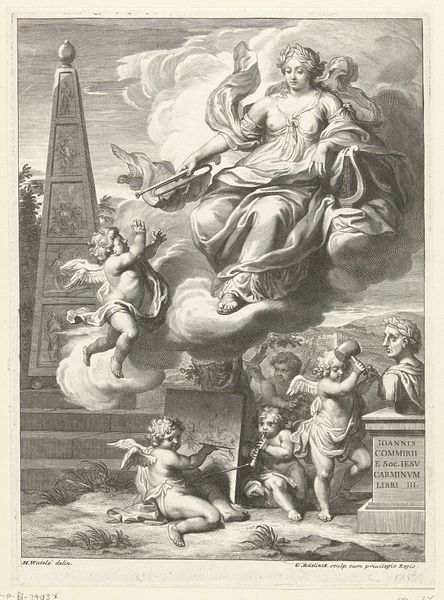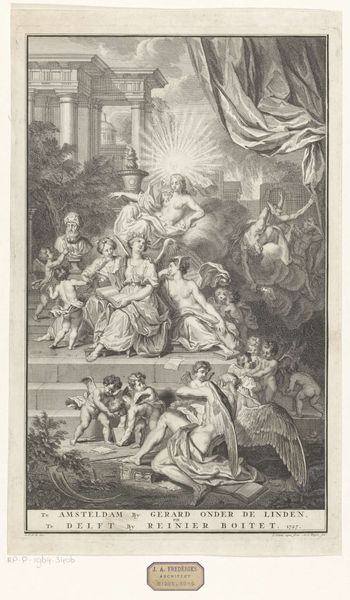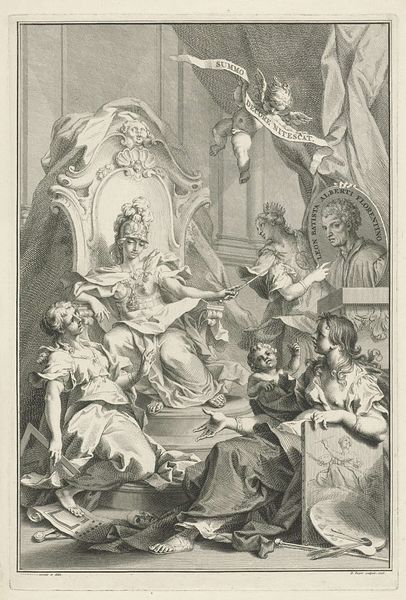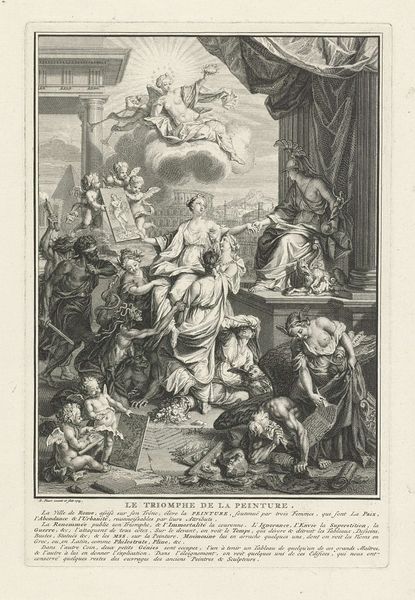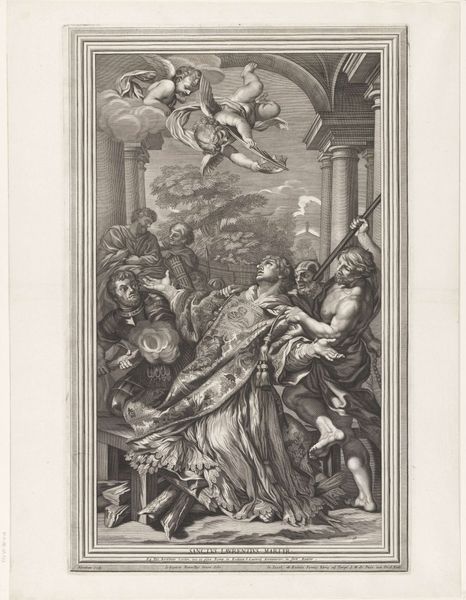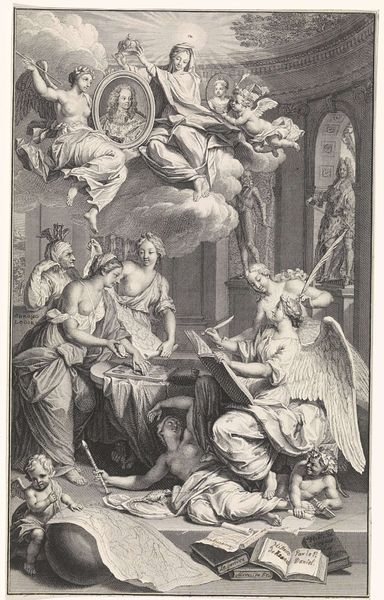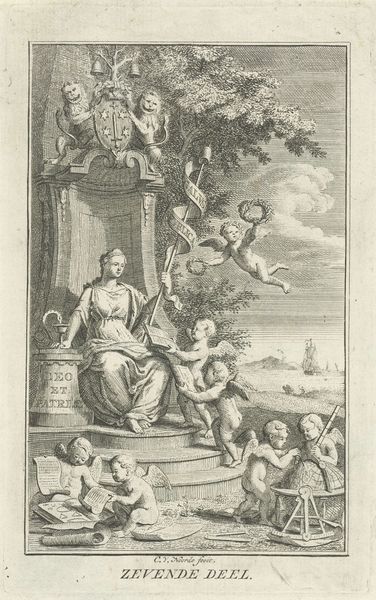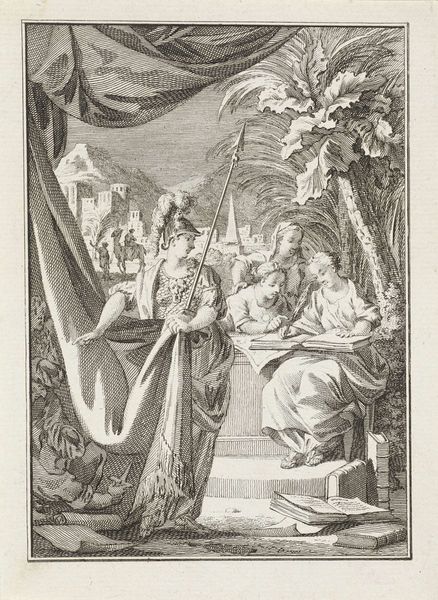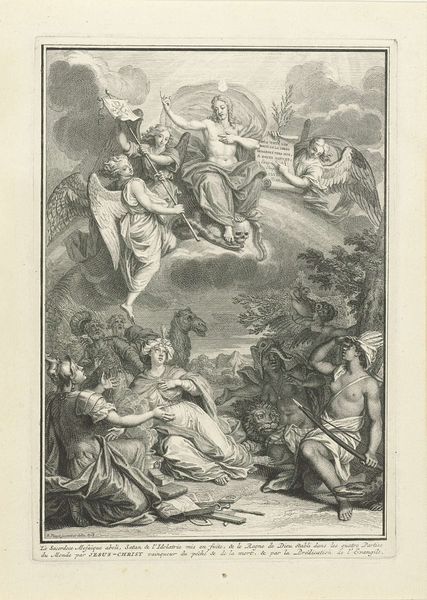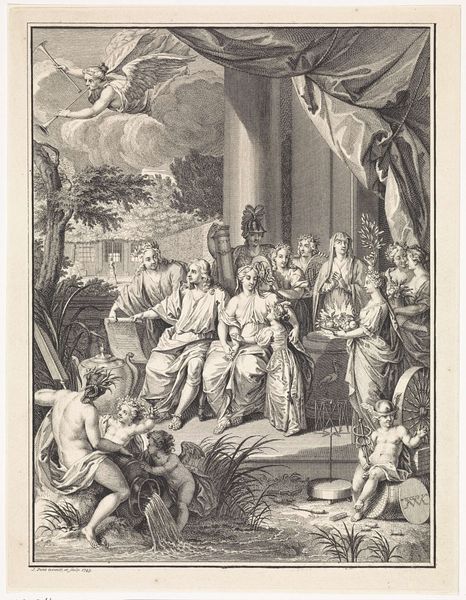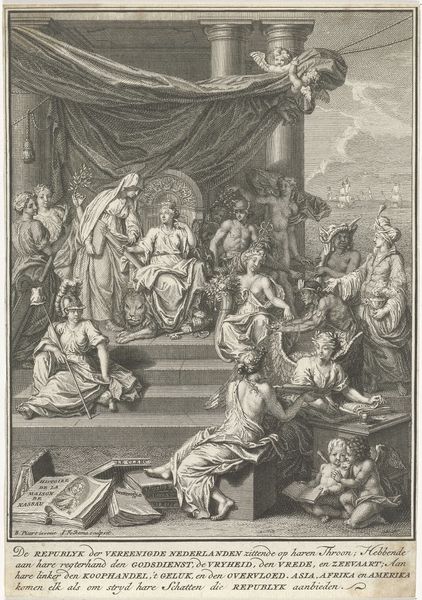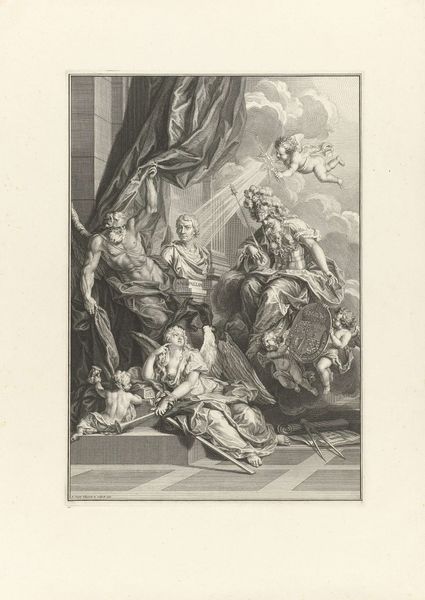
print, engraving
#
portrait
#
allegory
#
baroque
# print
#
pencil sketch
#
pencil drawing
#
history-painting
#
engraving
Dimensions: height 307 mm, width 202 mm
Copyright: Rijks Museum: Open Domain
Editor: So this is Gérard Edelinck's engraving of Isabelle de Bragance, dating sometime between 1675 and 1707, housed in the Rijksmuseum. It's incredibly detailed. I’m struck by the sort of divine atmosphere created by the clouds and allegorical figures. How do you interpret the symbolism within this print? Curator: It's important to understand that Isabelle de Bragance lived during a time of intense political and religious upheaval. The print portrays her surrounded by religious and allegorical figures; however, these are not neutral depictions. The Pope above and the figures of Faith, Hope, and Charity that embrace Isabelle should be interpreted as endorsements for Catholicism amid emerging Protestant voices. Given the intersectional implications of religion, power, and gender, how does this image function as a tool of propaganda? Editor: So, beyond just being a portrait, it's trying to reinforce specific religious and political ideologies? Curator: Exactly! The baroque style here isn't just about ornamentation, but about creating an overwhelming sense of authority. Notice how Isabelle, as the central figure, is strategically placed on what appears to be a throne of clouds with angels around her. This emphasizes her supposed divine right, but what are the broader historical and political implications of constructing this “divine” narrative around a woman of power? Editor: I guess it's reinforcing her power by linking her to something beyond the earthly realm? By framing her within a religious and social hierarchy. Curator: Precisely. Think about the other visual symbols—the crown, the chalice. The artist employs symbolic language that tells us about the relationship between power, religion, and society in the 17th and 18th centuries, particularly with its blatant statement of what constituted virtuous rule and religious devotion. What power dynamics are subtly at play here? Editor: It makes me think about how art from this period often served specific political and social agendas that went beyond pure aesthetics. Curator: Indeed! This print isn't just a portrait, but a complex statement about power, religion, and gender, actively engaging in the political discourse of its time. Editor: Seeing it that way makes me understand its relevance today as more than just a historical piece; it's a study of cultural rhetoric!
Comments
No comments
Be the first to comment and join the conversation on the ultimate creative platform.
